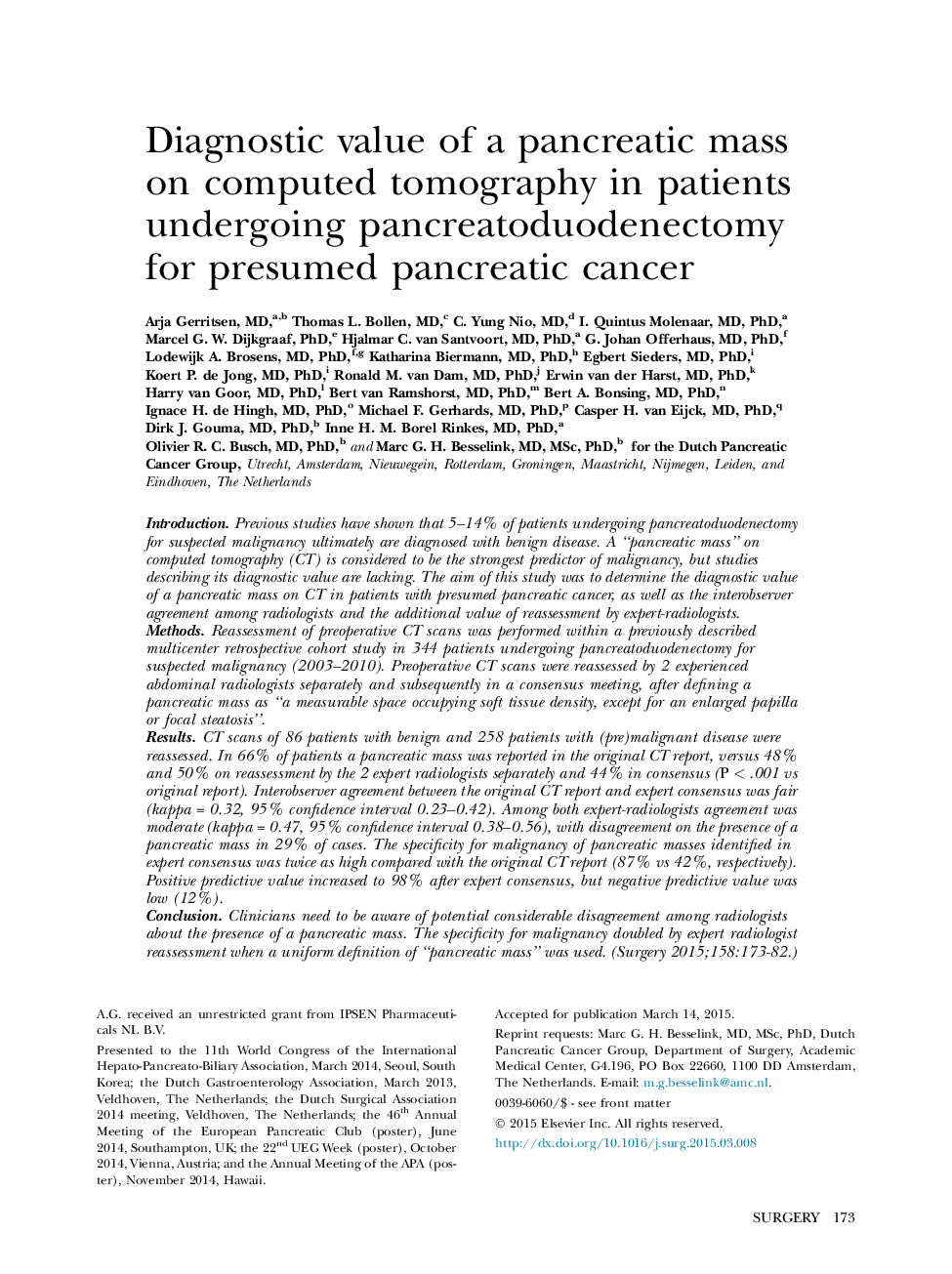| Article ID | Journal | Published Year | Pages | File Type |
|---|---|---|---|---|
| 6255323 | Surgery | 2015 | 10 Pages |
IntroductionPrevious studies have shown that 5-14% of patients undergoing pancreatoduodenectomy for suspected malignancy ultimately are diagnosed with benign disease. A “pancreatic mass” on computed tomography (CT) is considered to be the strongest predictor of malignancy, but studies describing its diagnostic value are lacking. The aim of this study was to determine the diagnostic value of a pancreatic mass on CT in patients with presumed pancreatic cancer, as well as the interobserver agreement among radiologists and the additional value of reassessment by expert-radiologists.MethodsReassessment of preoperative CT scans was performed within a previously described multicenter retrospective cohort study in 344 patients undergoing pancreatoduodenectomy for suspected malignancy (2003-2010). Preoperative CT scans were reassessed by 2 experienced abdominal radiologists separately and subsequently in a consensus meeting, after defining a pancreatic mass as “a measurable space occupying soft tissue density, except for an enlarged papilla or focal steatosis”.ResultsCT scans of 86 patients with benign and 258 patients with (pre)malignant disease were reassessed. In 66% of patients a pancreatic mass was reported in the original CT report, versus 48% and 50% on reassessment by the 2 expert radiologists separately and 44% in consensus (P < .001 vs original report). Interobserver agreement between the original CT report and expert consensus was fair (kappa = 0.32, 95% confidence interval 0.23-0.42). Among both expert-radiologists agreement was moderate (kappa = 0.47, 95% confidence interval 0.38-0.56), with disagreement on the presence of a pancreatic mass in 29% of cases. The specificity for malignancy of pancreatic masses identified in expert consensus was twice as high compared with the original CT report (87% vs 42%, respectively). Positive predictive value increased to 98% after expert consensus, but negative predictive value was low (12%).ConclusionClinicians need to be aware of potential considerable disagreement among radiologists about the presence of a pancreatic mass. The specificity for malignancy doubled by expert radiologist reassessment when a uniform definition of “pancreatic mass” was used.
